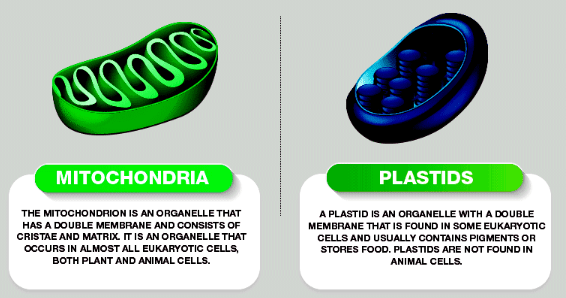Difference between Mitochondria and Plastids
Mitochondria and plastids are cellular components present in eukaryotes. Mitochondria are found in all eukaryotic cells including plants and animals, while plastids are most commonly found in plant cells as well as algae and protists.

What is Mitochondria?
Mitochondria are the most powerful organelles in the cell. It is the organ responsible for the production of ATP in the cell. This ATP is used as a type of cellular “currency” and is primarily used in aerobic respiration.
What is Plastids?
Plastids are similar to mitochondria in that they help in the production and storage of food (glucose). They are found in plants along with several other eukaryotes and have various colors.
The main difference between mitochondria and plastids is that mitochondria are found in all eukaryotic cells, but plastids are exclusive to certain eukaryotes such as plants, algae and protists.
Difference between Mitochondria and Plastids
| Mitochondria | Plastids |
| Found in all eukaryotic cells | Found in only plant cells (as well as algae and protists) |
| Produces ATP | Produces glucose and stores it as starch |
| The main function is cell respiration | Main organelle for photosynthesis |
| Smaller in size | Comparatively larger in size |
| Pigments are absent | Pigments are present |
Related Articles: